Editor’s Note: This post was originally published on September 27, 2019, and was updated for accuracy and comprehensiveness on December 6, 2023.
Humans have been telling stories for as long as we’ve been around. Parents tell stories to help their kids fall asleep at night, coaches tell stories to inspire their teams to win the championship, and your friends tell stories just to put a smile on your face. Why? Because people remember stories better than they remember most things. Stories make you feel something and emotionally invest in the characters.
Brands recognize the importance of storytelling as well. Every brand has its own unique narrative of how it got started and why it does what it does. When a brand shares and engagingly demonstrates this, it can draw customers in for the long haul.
Brand storytelling is a tale as old as time, and we’ve compiled a list of ten of the best brand stories to inspire your small business in your own storytelling.
Dove
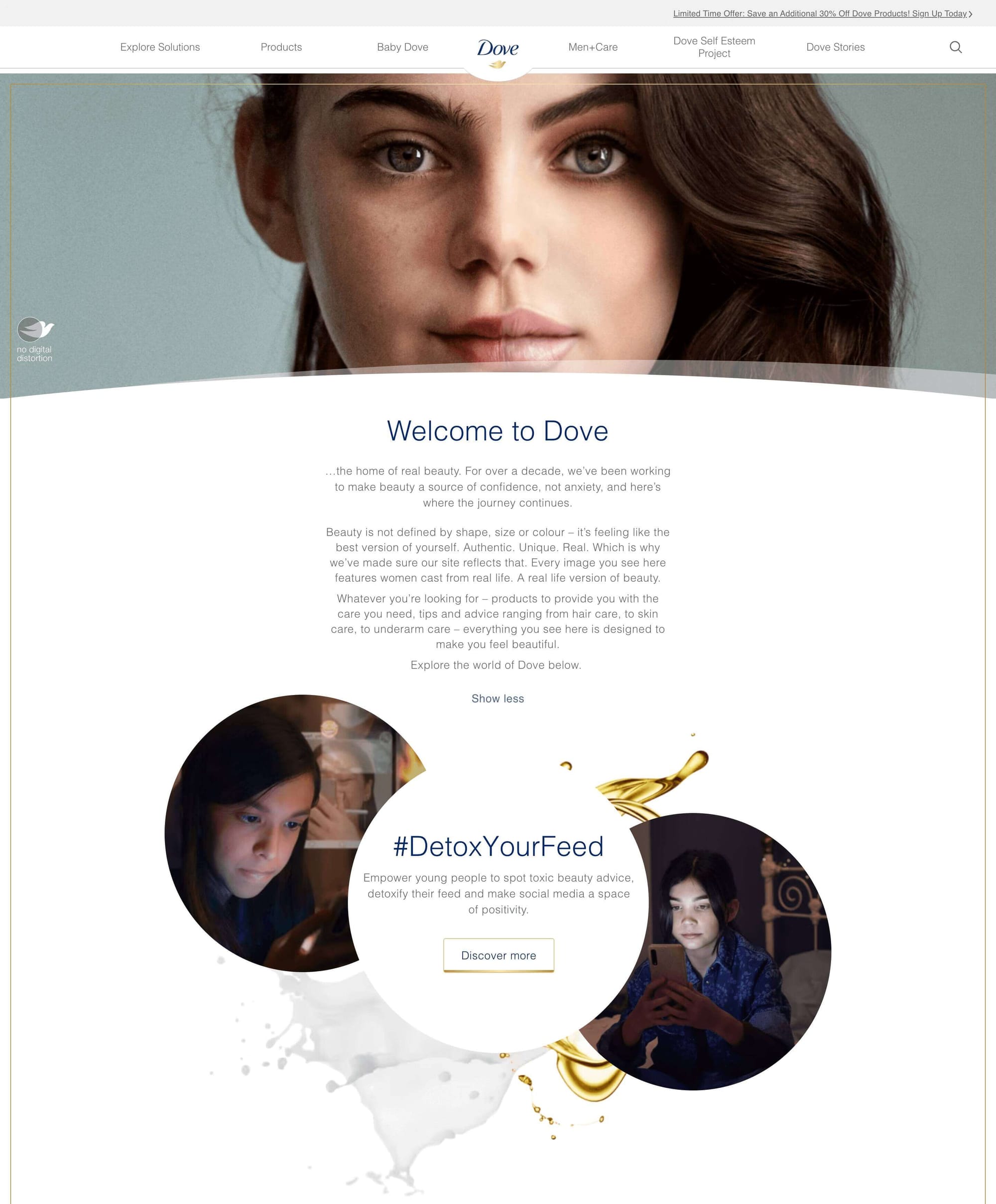
While thousands of brands actively support social causes, Dove is undoubtedly one of the best examples. With several campaigns like their famous Real Beauty Productions and the Dove Self Esteem Project, Dove continually promotes real beauty by celebrating inner beauty and confidence in all women.
By sharing a message that resonates with people so deeply, they don’t even need to market their actual products. It is no secret that shampoo, deodorant, and body wash probably don’t make you feel emotional, but Dove’s continuously empowering campaigns definitely spark an emotional connection. Since making your customers feel connected with your brand’s values fosters loyalty, Dove shows that a purposeful commitment to your brand’s story is just as important as a quality product.
Through empathetic storytelling featuring real people, customers can see themselves in Dove’s powerful advertisements. By building a brand that celebrates every type of woman, Dove’s narrative engages diverse people. With highly emotional messages, Dove fosters loyalty by creating a true customer bond.
What can you learn from them?
Cause-related marketing can cause customers to think of your values before your products.
- Bridget Carmady, Founder of Clémence Organics, Smile.io's happy customer
Analogue Wonderland
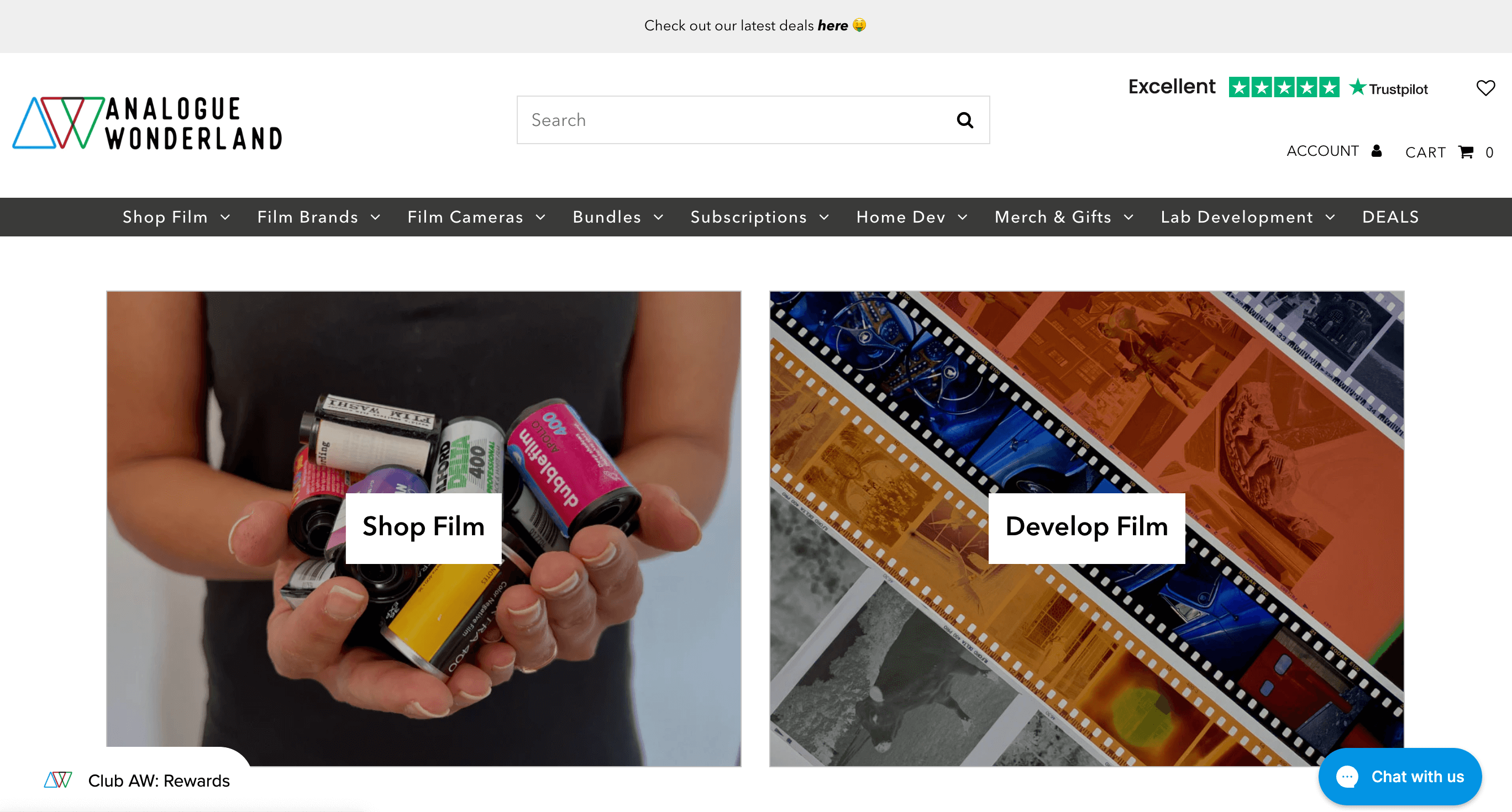
In a digital world where technology is constantly changing and advancing, Analogue Wonderland is a perfectly preserved slice of the past. Founded in 2018, British mother-and-son duo Mary and Paul aimed to make film photography as fun and accessible as possible for everyone.
Film photography’s vintage aesthetic evokes feelings of nostalgia by instantly capturing moments in their original form and creating perfectly imperfect photos. From popular brands like Polaroid, Kodak, and many others, Analogue Wonderland caters to a wide variety of film lovers from newbies to experts.
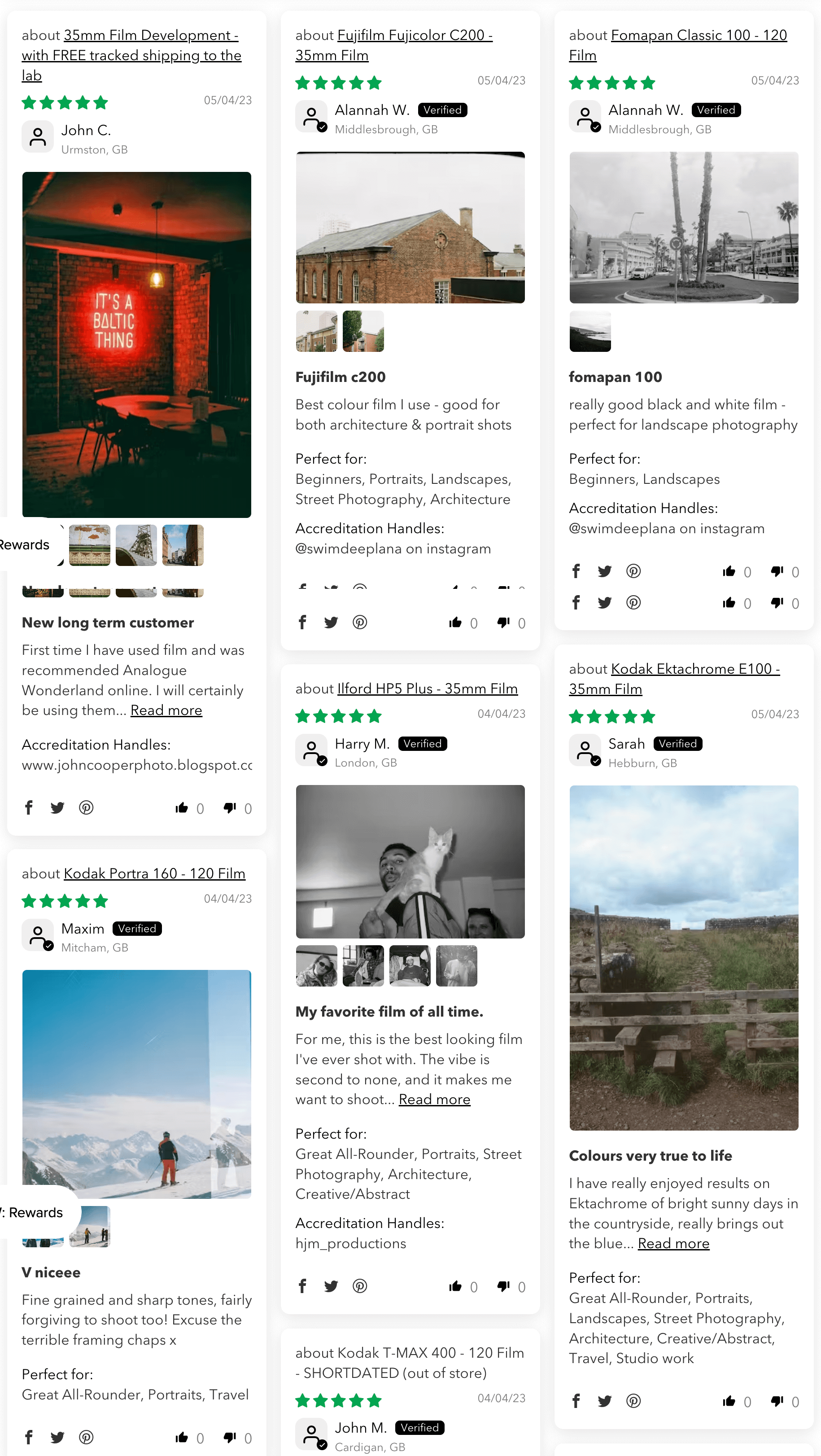
They say a picture is worth a thousand words, and that’s the whole point with Analogue Wonderland. With over 10,000 customer reviews, their Wall of Inspiration showcases customer photography and product reviews to inspire other customers. This type of user-generated content is critical in building an authentic brand for one simple reason–customers are influenced by each other’s content as much as 79% more than by branded content. Value-added marketing builds a community where users are inspired by each other and engaged in their stories.
With a brand story that is better told through images than words, Instagram provides another valuable storytelling tool. Since their customers are already actively engaged on social media, Analogue Wonderland motivates them to connect with them online by rewarding users with Wonderpoints for social follows. They also run monthly photo contests for their most loyal customers, featuring their work on social media. Motivating your customers to engage with you on social media invites them to join an online community where they feel like they belong.
What can you learn from them?
Sometimes it’s best to let others tell your story for you.
Luca + Danni
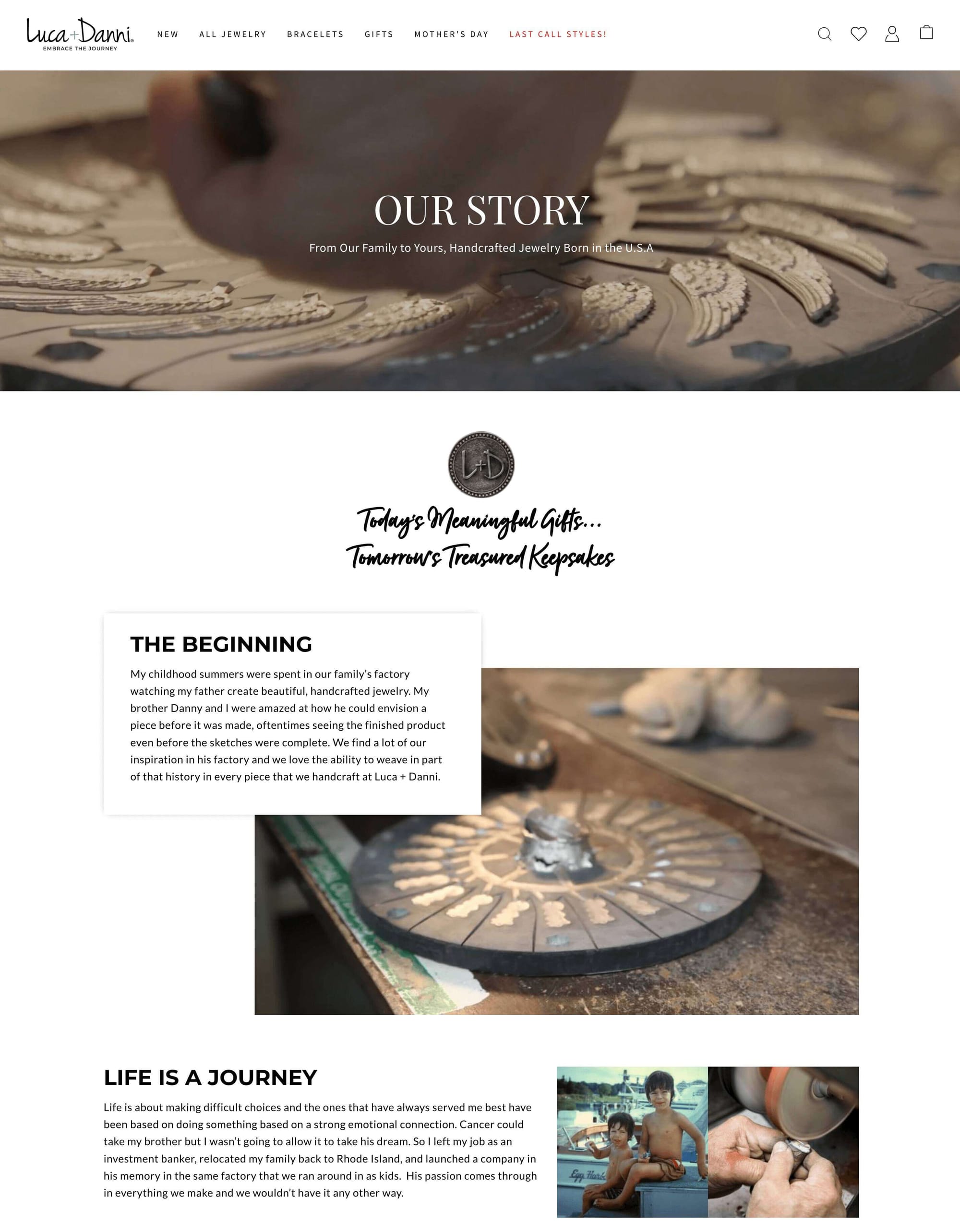
There’s no denying that jewelry is a great way to put a smile on someone’s face. For Fred Nagnanimi, the founder of Luca + Danni, this has been true ever since he watched his father create handcrafted jewelry as a child. Through a personal Our Story page filled with childhood photographs, Naganimi recounts the heartwarming tale of carrying out his brother’s dream of re-inventing their father’s jewelry manufacturing business after his brother lost his battle with cancer. The love and devotion displayed here make this brand story beautifully authentic.
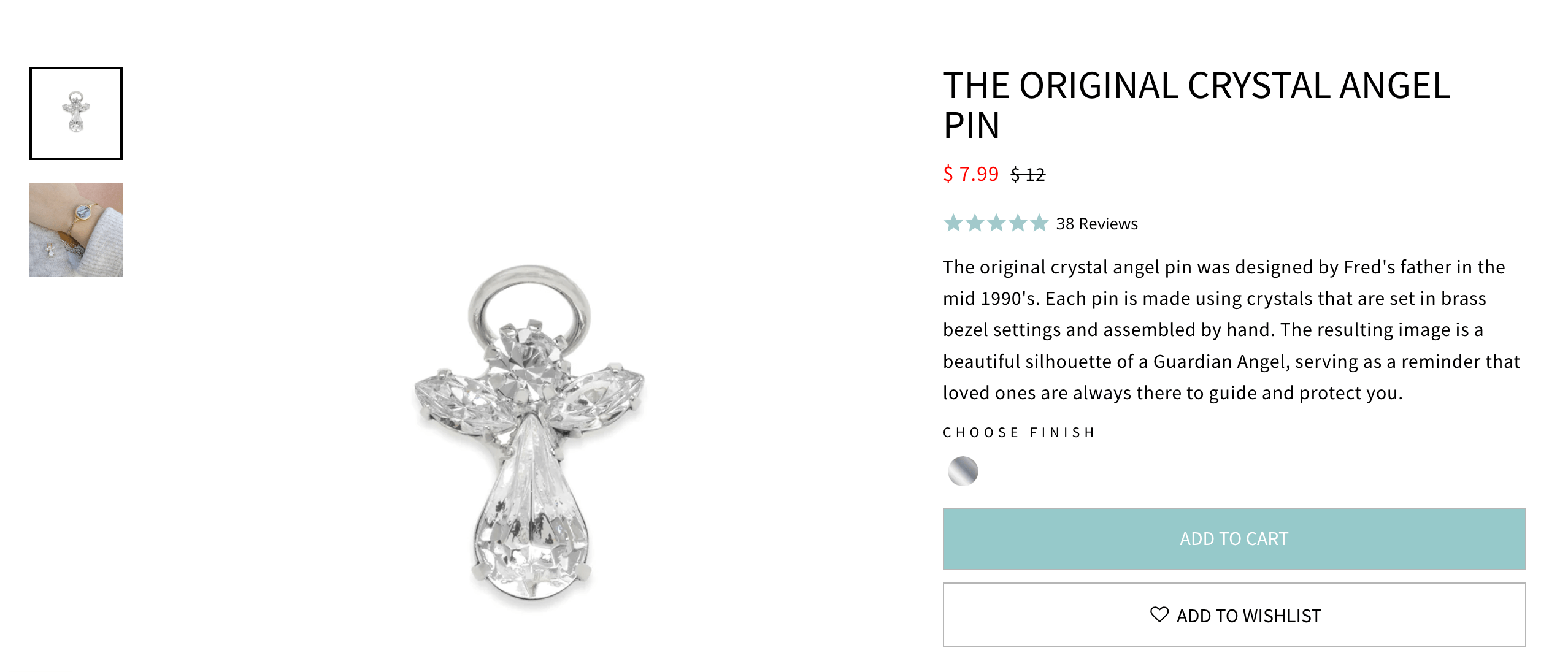
A touching origin is a great place to start, but that’s just the first chapter of Luca + Danni’s story. From finding that perfect gift for your mom’s birthday to picking out a meaningful anniversary present, jewelry is a classic present from the heart. Luca + Danni allows customers to find the perfect message for every occasion by including the inspiration behind each piece of jewelry on each product page.
Additionally, there’s no denying that family is a value embedded in every aspect of Luca + Danni’s brand. Perhaps this is best illustrated on their Instagram, which is full of personalized posts about the founder’s family. From photos of his kids to heartfelt tributes to his late brother and father, Fred is vulnerable with customers, allowing them to feel like they are a part of the family. Luca + Danni’s first-person narrative lets customers feel like they know the people behind the brand, leading to emotional engagement that you just can’t put a price on.
What you can learn from them?
Make your customers feel like they were part of your brand’s journey from the start, and they’ll stick with you through it all.
Nike

When telling your brand’s story, a powerful slogan goes a long way. Nike is arguably the best example of this with its thirty-five-year-old “Just do it” slogan. However, this message has become more than a simple marketing tactic for Nike. “Just do it” is the driving motivation behind their entire brand–it’s even included in their title on search engines.
The appeal of this message is that it can mean something completely different to every single customer yet remain equally motivating. Whether you’re training for the Olympics or your high school track and field meet, the story is the same—just do it.
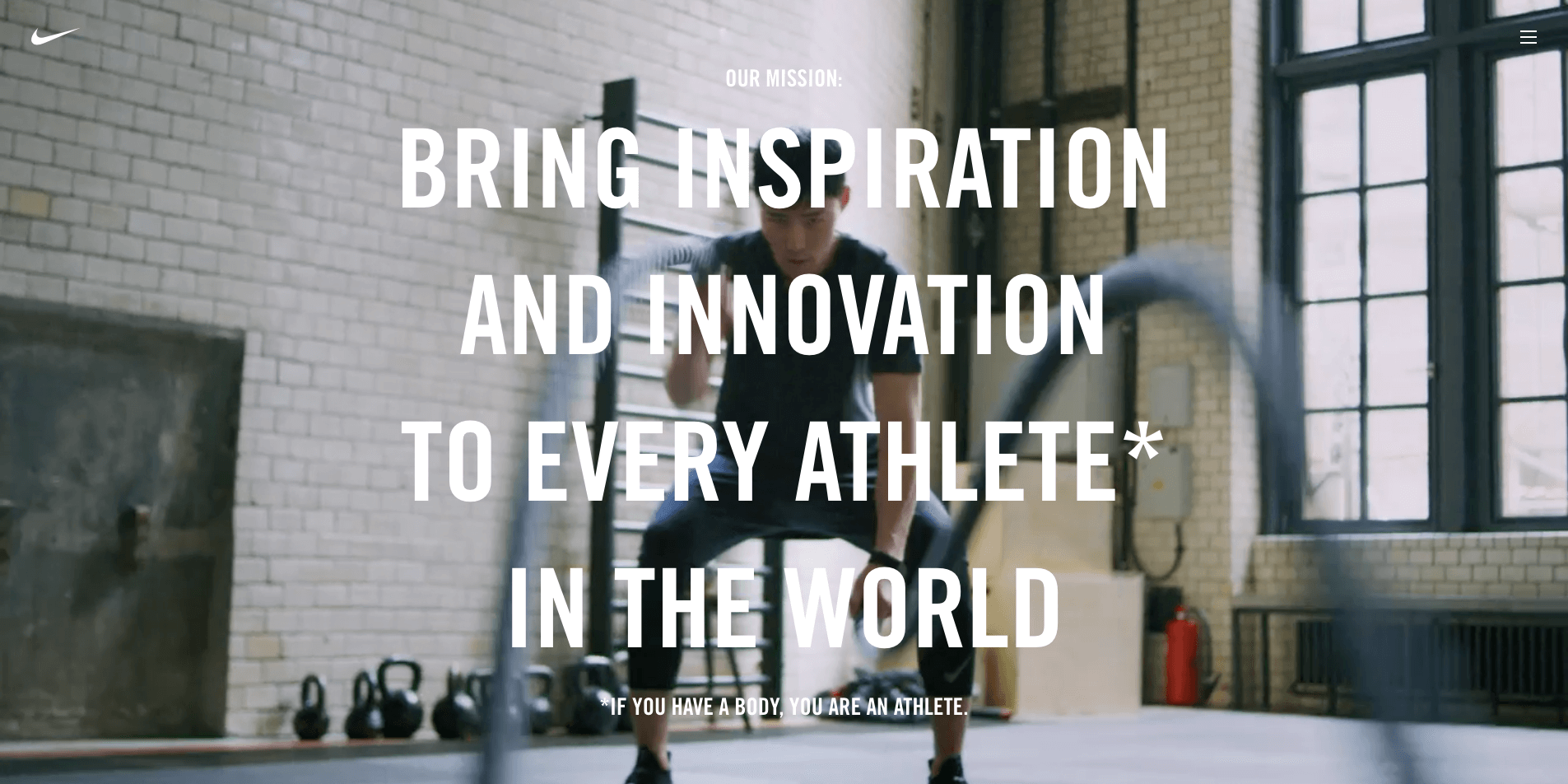
While their products are always subtly intertwined into their campaigns, they are never the main focus. Instead, Nike goes the extra mile by making their customer the main character of every story they tell. Celebrating famous athletes’ success stories inspires customers to strive for their best. The message is never about how amazing their products are. The story is about how amazing the product will make you as an athlete. This type of empowerment has created a die-hard fan base that consistently roots for Nike.
Perhaps one of their best storytelling examples is their Dream Crazier ad. Featuring famous examples of powerful women athletes, Nike tells its customers, especially females, that “it’s only crazy until you do it.” The advertisement’s story spoke to so many people that it boosted Nike’s revenue by 31% and added $6 billion in value to the brand. When your brand makes people believe in themselves, they’ll believe in you.
What can you learn from them?
If you can inspire confidence in your customers, just do it.

FaceTory
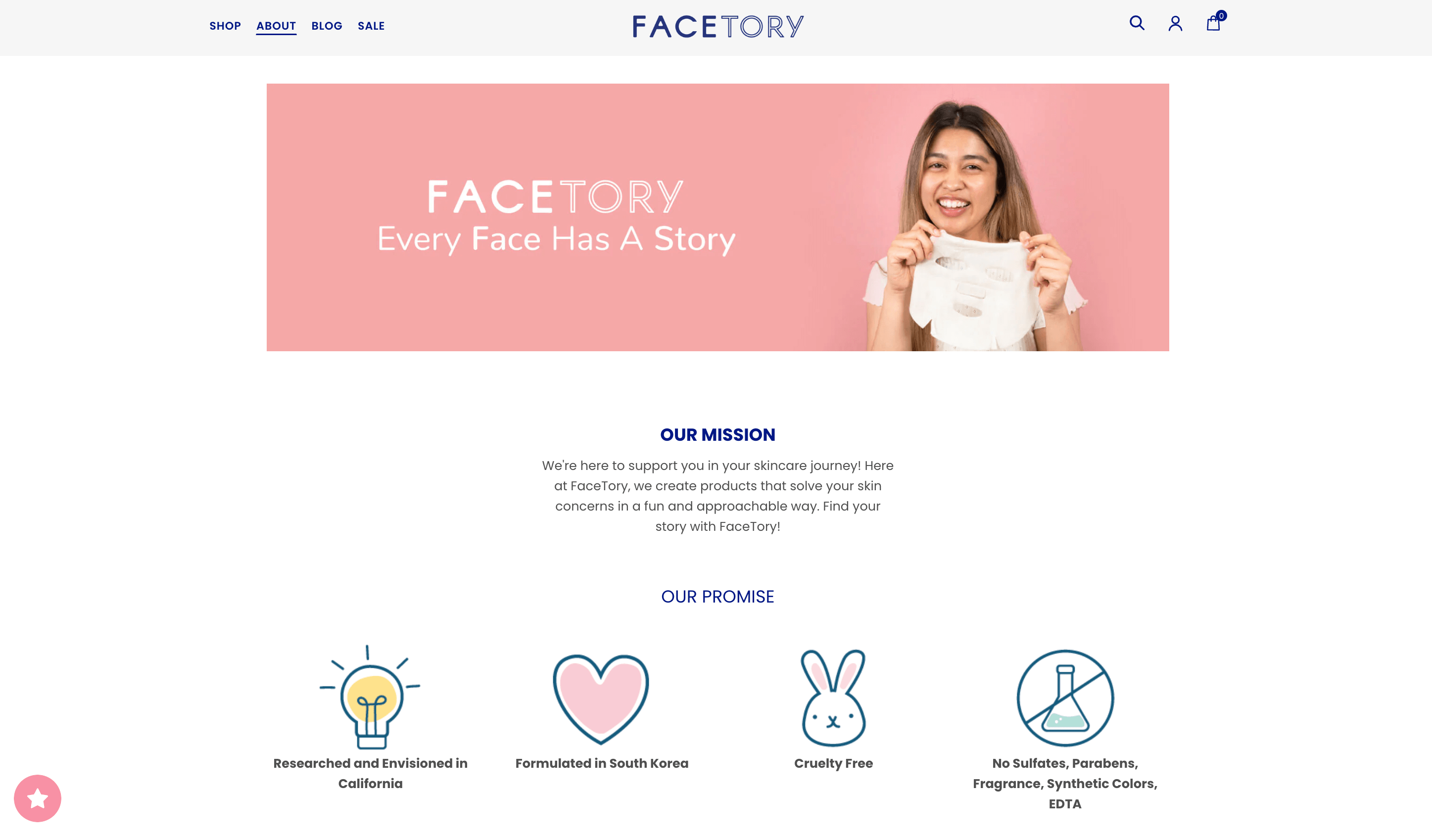
With millions of skincare products on the market, customers demand transparency in the ingredients and processes used. One brand that paints a clear picture for customers is skincare brand, FaceTory. Like many other K beauty brands, they use natural ingredients to create effective, clean products. But what sets FaceTory apart is the commitment to finding a unique personalized solution for every customer because “every face has a story.”
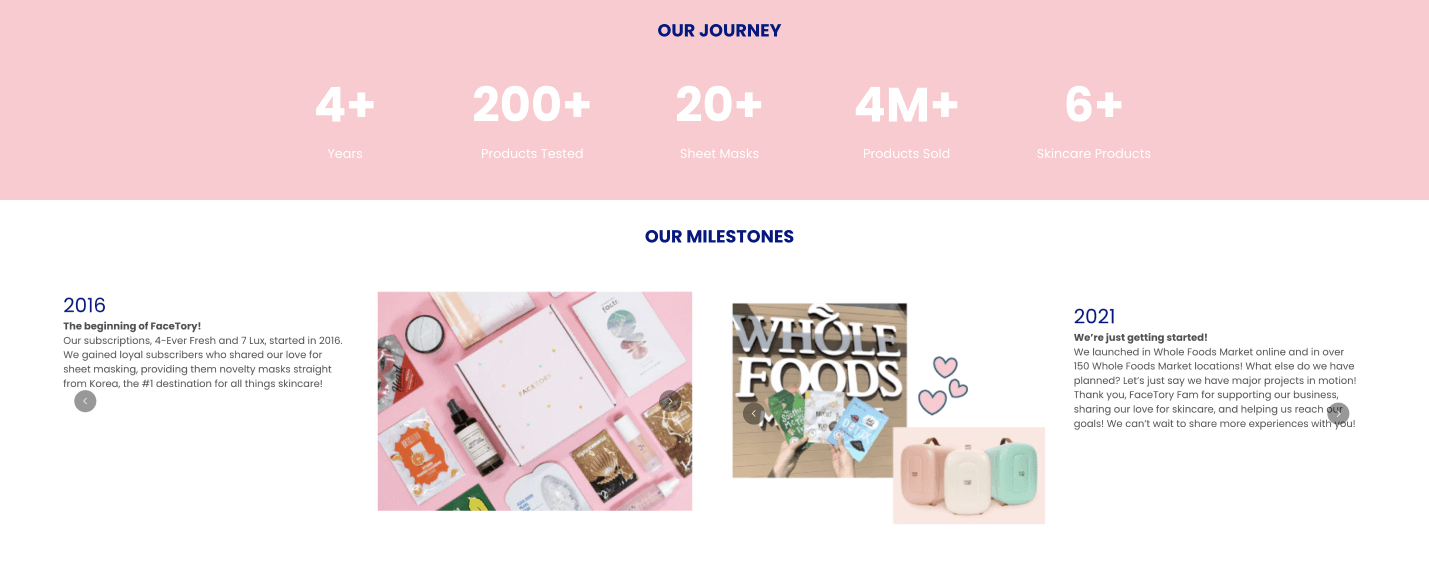
Aside from its personalized skincare quiz that helps customers find the best products for their skin concerns, FaceTory creates a personalized experience by sharing its own story with customers. Customers can view the milestones FaceTory has achieved over the years on the website. Beginning its journey in 2016, FaceTory walks customers through the highlights and accomplishments of each year.
- Sang Lee, CEO of FaceTory
When you humanize your journey like this, customers feel like they’re a part of your story. Those customers who have been with the brand since 2016 feel a sense of pride in watching it grow. New customers can appreciate its success more deeply by seeing its humble beginners. No matter when a customer discovers FaceTory, these milestones give them an inside look into its journey.
What can you learn from them?
Humanize your journey by sharing essential milestones.
Better World Books
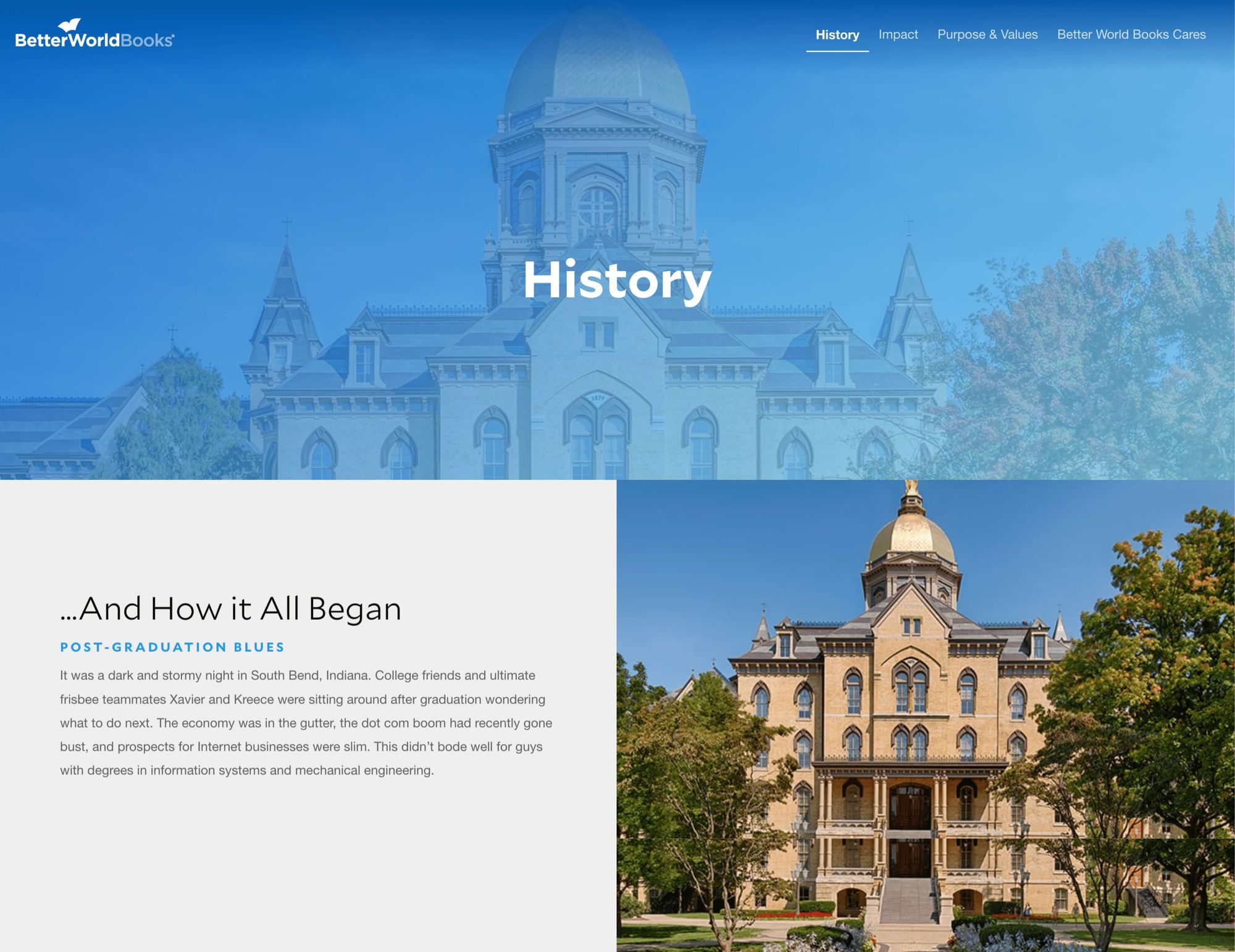
If there’s any brand that’s going to tell its story in a captivating way from beginning to end, it’s a bookstore. As no stranger to the power of a good story, Better World Books embeds its brand story into just about every element of its business, from its book-for-book donation model to the brand name. Founded in 2002 by two college students at Notre Dame, Better World Books began as a way to make some extra money by selling old textbooks online.
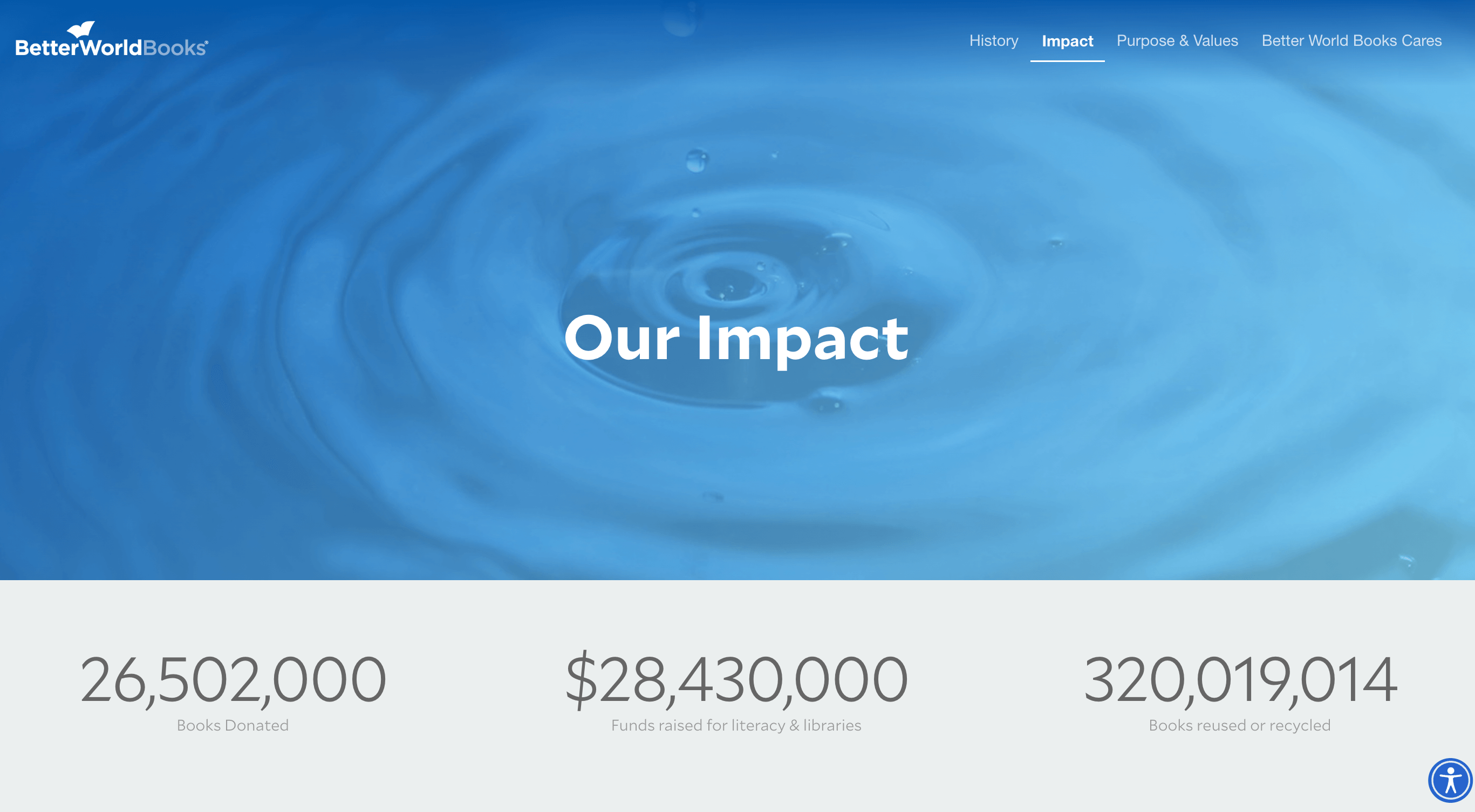
From there, the business evolved into a social venture through book drives and collaborations with local libraries to sell their old books. The brand has taken its social cause further by supporting literacy and educational nonprofits to reduce global poverty through education. To date, Better World Books’ impact is shown through over 26 million books donated to people in need, more than $28 million raised for literacy and libraries, and more than 320 million books saved through recycling.
It’s one thing to tell someone a story, but it’s an entirely different thing to show someone. By including an uplifting explainer video, the company founders tell their personal stories and journey, explaining their mission along the way. Showing your story to customers through video allows you to create a lasting impression in just a few seconds in an engaging way.
Next time you search for a good book, think about Better World Book’s story and make your purchase count.
What can you learn from them?
When your brand’s reason for existing is visible through your story and business model, customers can become loyal before they even make a purchase.
CabinZero
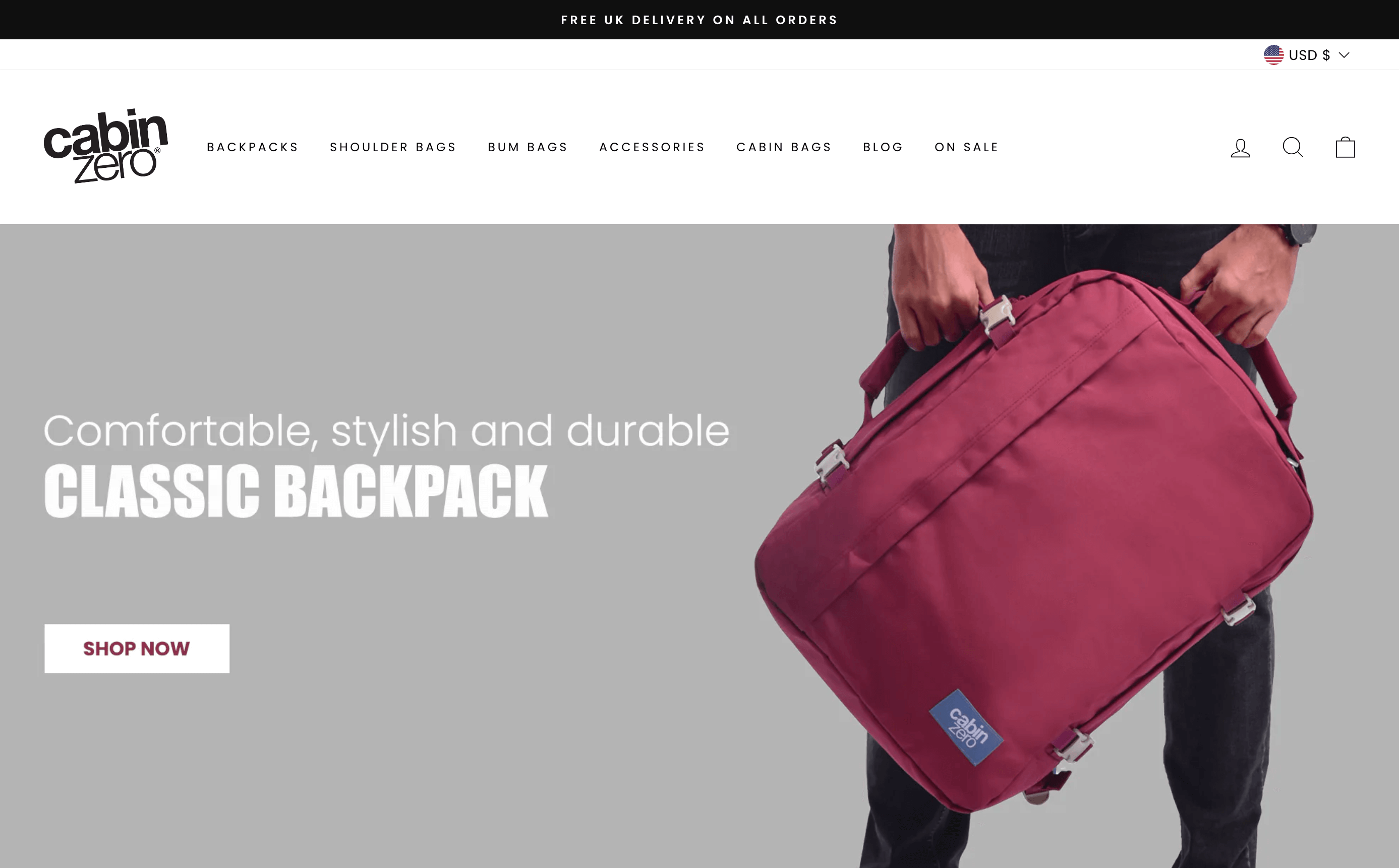
As we saw before with Luca + Danni and Better World Books, telling customers how it all started makes them feel connected from day one. CabinZero does an excellent job with this by sharing an anecdotal story about the founder’s travel struggles while backpacking India in 1993.
From lugging around awkward, heavy bags to airline carry-on restrictions, founder and CEO Neil dreamt of a bag that made his travels easier. If you’ve ever traveled with a backpack for an extended period, you know a good bag is make-or-break (especially for your poor back). Neil created a checklist for his dream backpack–lightweight, durable, small enough to keep by his side, and had zippers that actually locked. After searching for a bag that fit the bill in the UK and Asia, Neil came up short. So, he decided to make one himself.
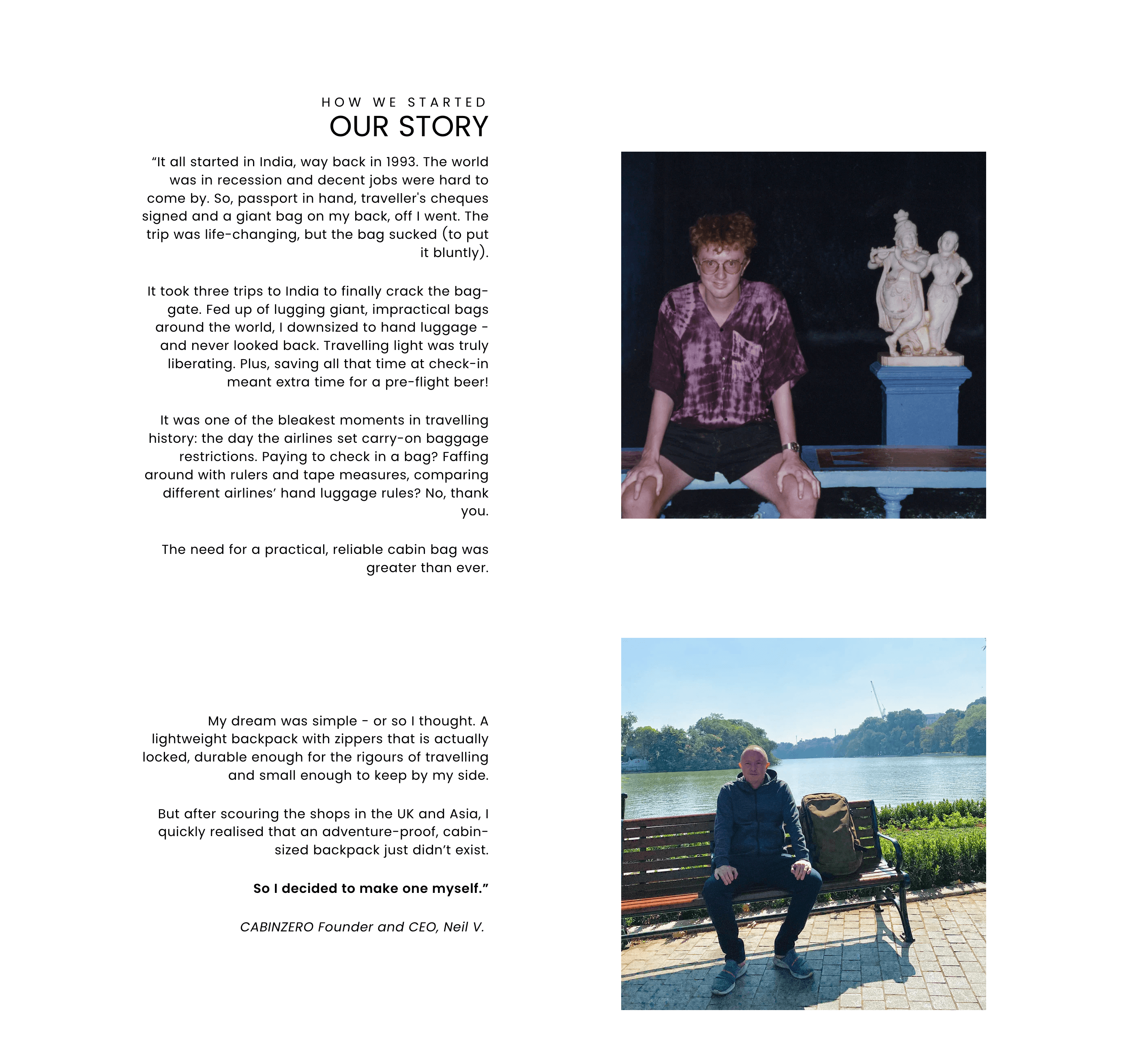
As a brand made for travelers, by travelers, it’s not hard to imagine how CabinZero has built such a strong brand community. When dreaming of your next adventure, you’re most likely thinking about the views, foods, and cultures you’ll experience–not the backpack you’ll bring. CabinZero understands this and is, first and foremost, a lifestyle brand for travelers. The brand can communicate its story without saying a single word by featuring inspirational travel pictures from real customers.
Sharing your community’s excitement about your brand draws new customers in and lets them get excited, too!
What can you learn from them?
Share your passions before your products–people want to be inspired, not sold to.
Qwerky
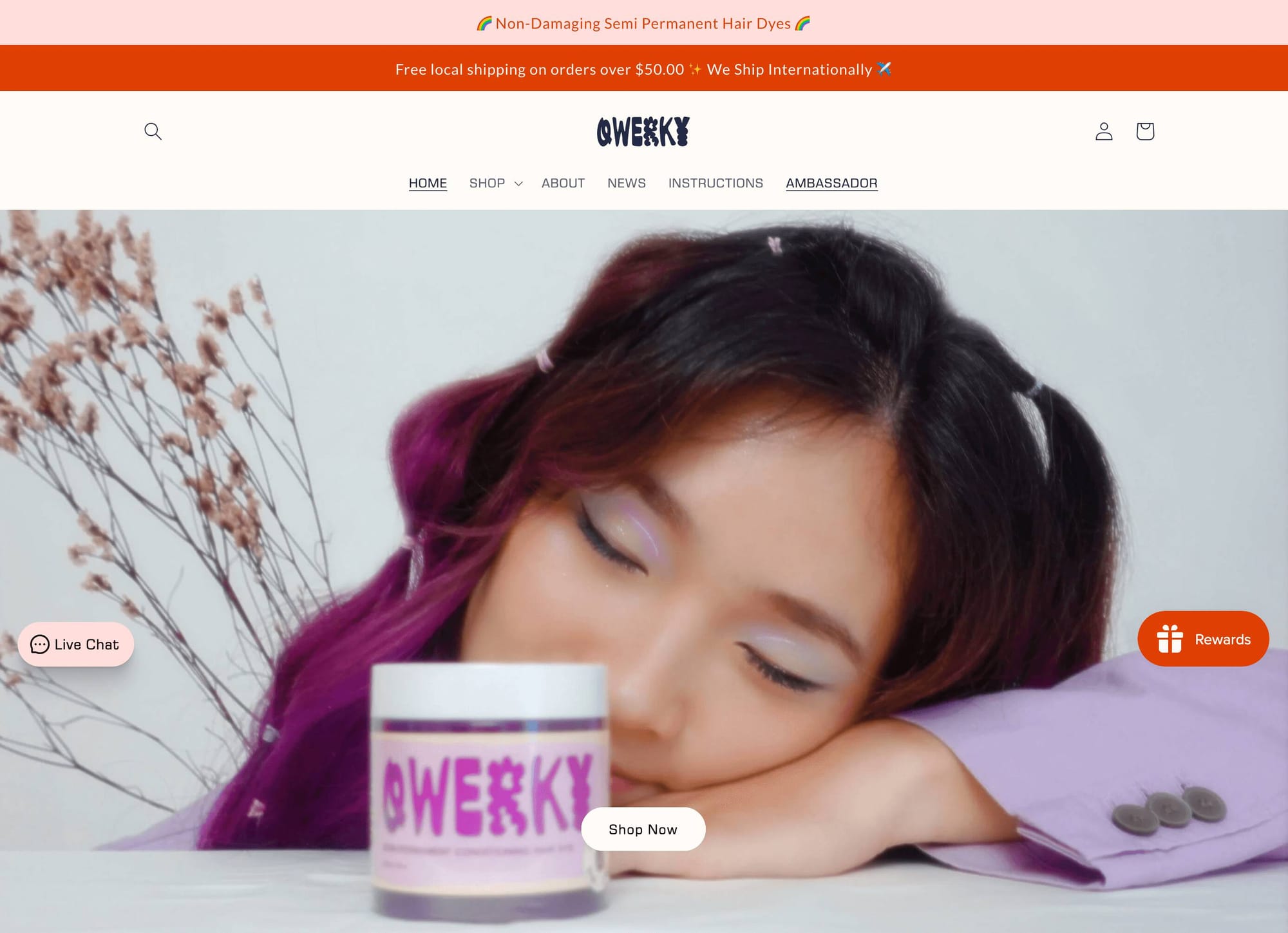
When you think about some of your favorite stories, chances are you remember the title. The same thing is true for brands and their names. QWERKY Colour takes the guesswork out of figuring out its purpose with a name that clearly communicates what it stands for. Through various non-damaging, long-lasting, and vibrant semi-permanent hair dyes, QWERKY empowers customers to embrace self-expression and be their authentic, unapologetically quirky selves.
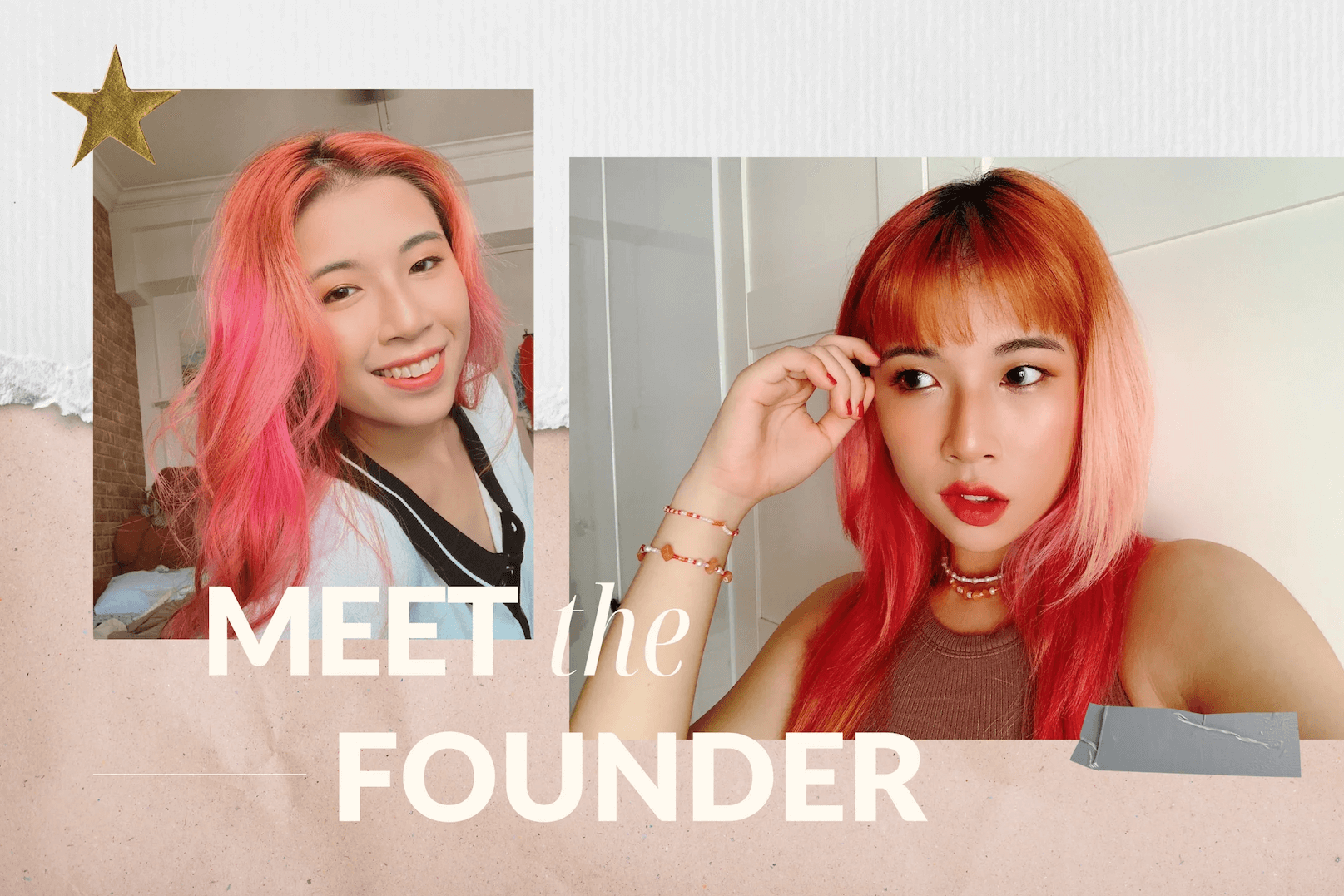
Founder Koh Qi Wen shares the personal story that drove her to create the brand and name. The inspiration for the name comes from two places–her name and a funny childhood memory. QW are her initials, and as a child, Qi Wen spelled “quirky” as “qwerky.” The name is a constant reminder to be fun and not take yourself too seriously.
Growing up in Singapore, Qi Wen was never allowed to have colored hair until after graduation. When she first dyed her hair at 18, she instantly fell in love and knew it was meant to be. Today, her friends and family know her as the girl with colored hair. Qi Wen founded QWERKY to give other adventurous souls the same chance to express themselves through their hair. She wanted to bring affordable, non-damaging, long-lasting hair dye in trendy shades to the masses.
What you can learn from them?
A great brand story starts with a great name.
The Giving Keys
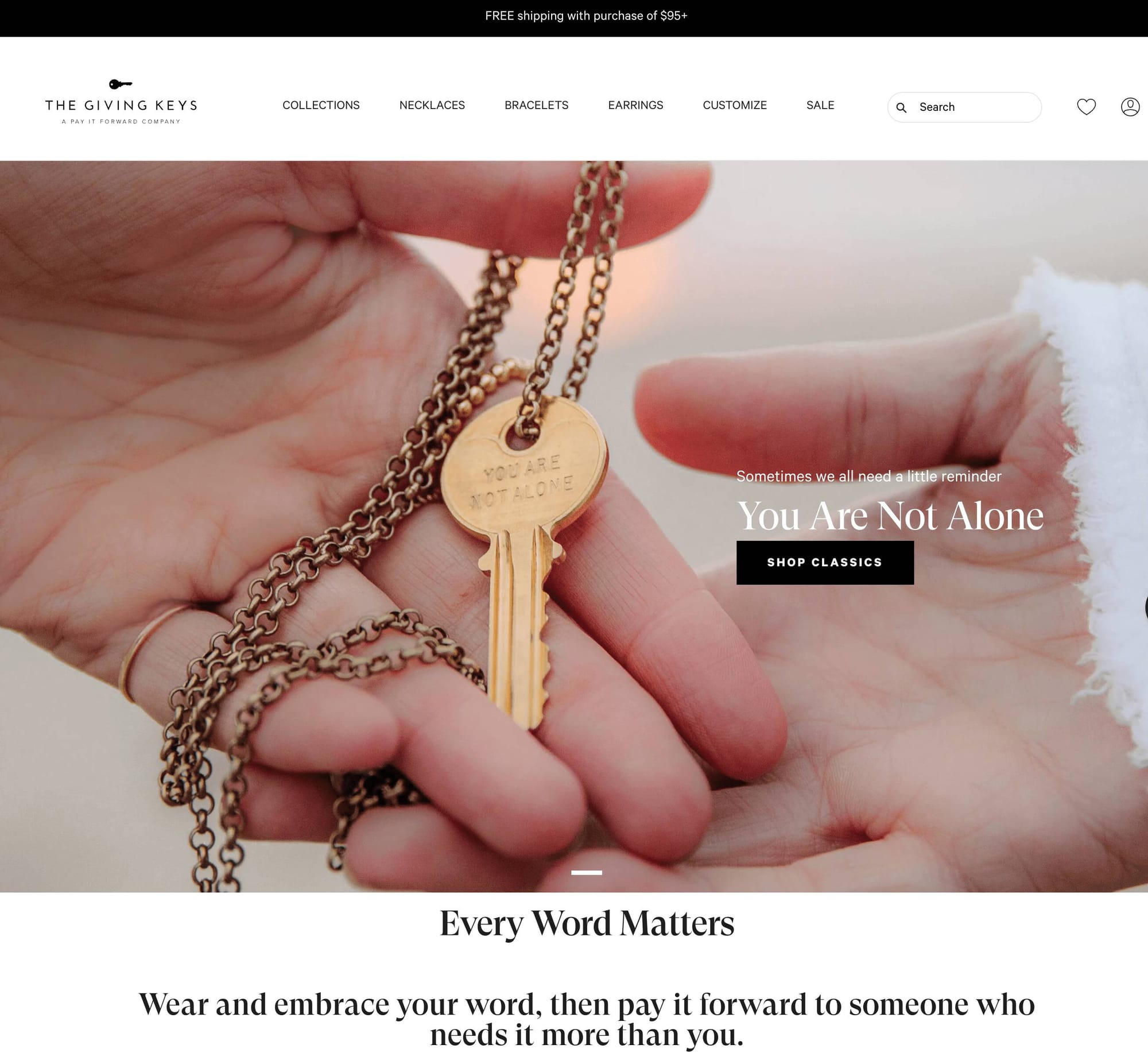
Defining yourself as a “Pay it Forward Company” instantly sets the scene for a compelling story. The Giving Keys, a jewelry company that sells key-shaped pieces, lives out their story in three main ways.
The first way is through their products. The simple key necklaces are engraved with words like hope, believe, courage, and many other values people can relate to. The beauty of this jewelry lies in the simplicity of it all. Its timeless design, combined with a word you value, makes the jewelry special to you in a way only you understand.
The second page in The Giving Key’s storybook is the stories that their customers share. A significant component of their brand is paying it forward by passing on your jewelry to someone who can find value in the word displayed on your necklace. Giving away your jewelry may seem unbelievable at first, but inspiring stories from customers who have done just this have revealed the beauty behind this simple idea. Putting a meaningful twist on a classic product can lock your customers in.
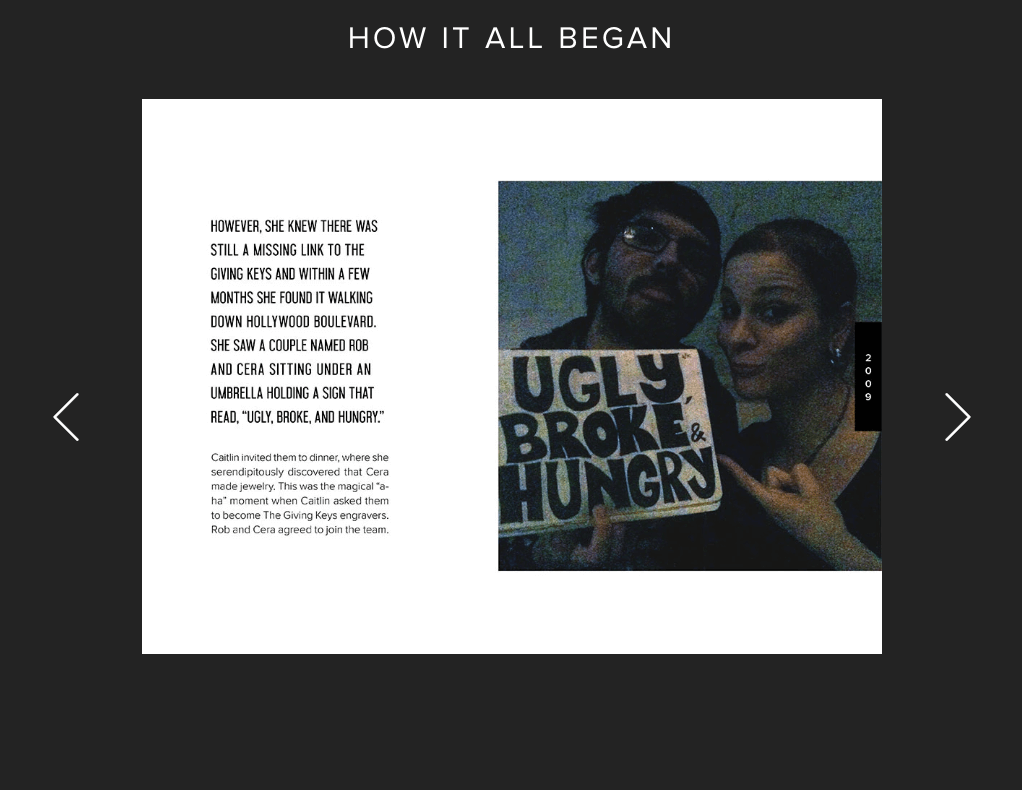
The final part of this story is the impact the brand creates. Through creating job opportunities for people transitioning out of homelessness, The Giving Keys truly lives up to its name by giving individuals the tools they need to unlock their fullest potential. The founder shares her story of meeting a couple who were experiencing homelessness and asking them to join her team. The fact that this has stayed with the brand since day one created the groundwork for an amazing story.
What can you learn from them?
The key to success is taking an ordinary product and turning it into something extraordinary with a unique story.
Apple
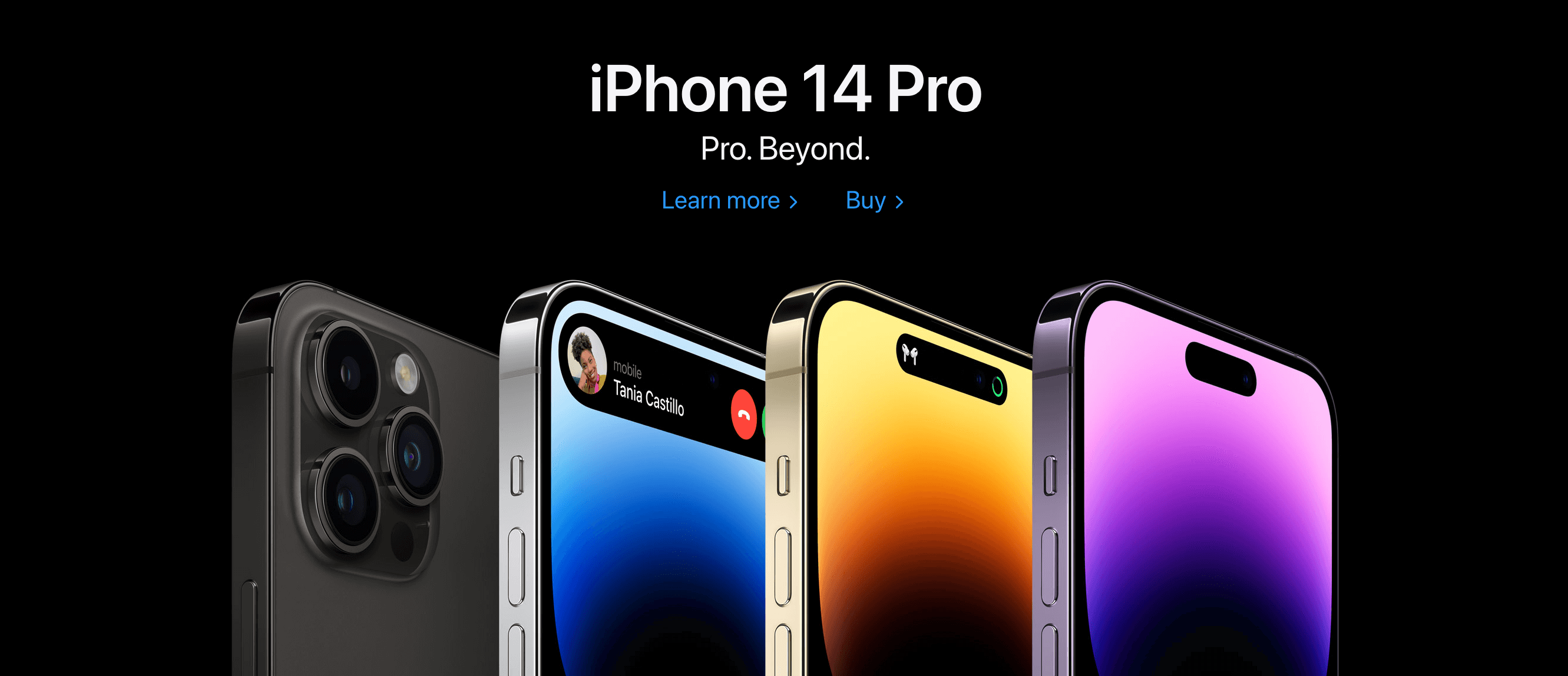
Given the iconic storytelling central to their brand, it’s no surprise that Apple landed a spot in our top ten. Ever since Steve Jobs’ keynote speech in 2007 announcing the iPhone, it was clear that Apple was way more than just a computer company. There’s a reason people sleep outside in the streets lining up for the latest iPhone. It’s not the fact that the iPhone 14 has a faster 6-core CPU–most of us don’t even know what that means. The loyalty comes from the feeling of connectivity that Apple has created through its brand network.
Today alone, I iMessaged my friend a song through Apple Music, FaceTimed my nephew, and asked Siri for directions. Apple helps me and its customers stay connected with the world around them and, more importantly, their loved ones. Simply put, Apple makes technology human.
They are the perfect example of a brand that successfully leverages its loyal customer base to promote its products. By connecting with customers on an emotional level, they’ve turned customers into fans and fans into brand advocates. People get excited to talk about their new Apple products to everyone and anyone, and that only comes from creating a story that people want to share.
What can you learn from them?
Maintain the human element of your brand–no matter what industry you’re in.
Storytelling strategies to implement for your brand
As you can tell, there are countless ways to tell your brand story authentically.
Here are our top 5 brand storytelling tips for your brand:
- Start at the beginning. Share your brand inspiration to hook customers in.
- Determine the purpose of your story. Are you inspiring, entertaining, or educating your audience with your story?
- Make your story emotional. If your brand story makes customers feel something, they’re more likely to remember it.
- Communicate brand values through your story. Your story should let readers know why you exist in the first place.
- Invite customers to be a part of your story. Use UGC to let customers tell your story for you.








